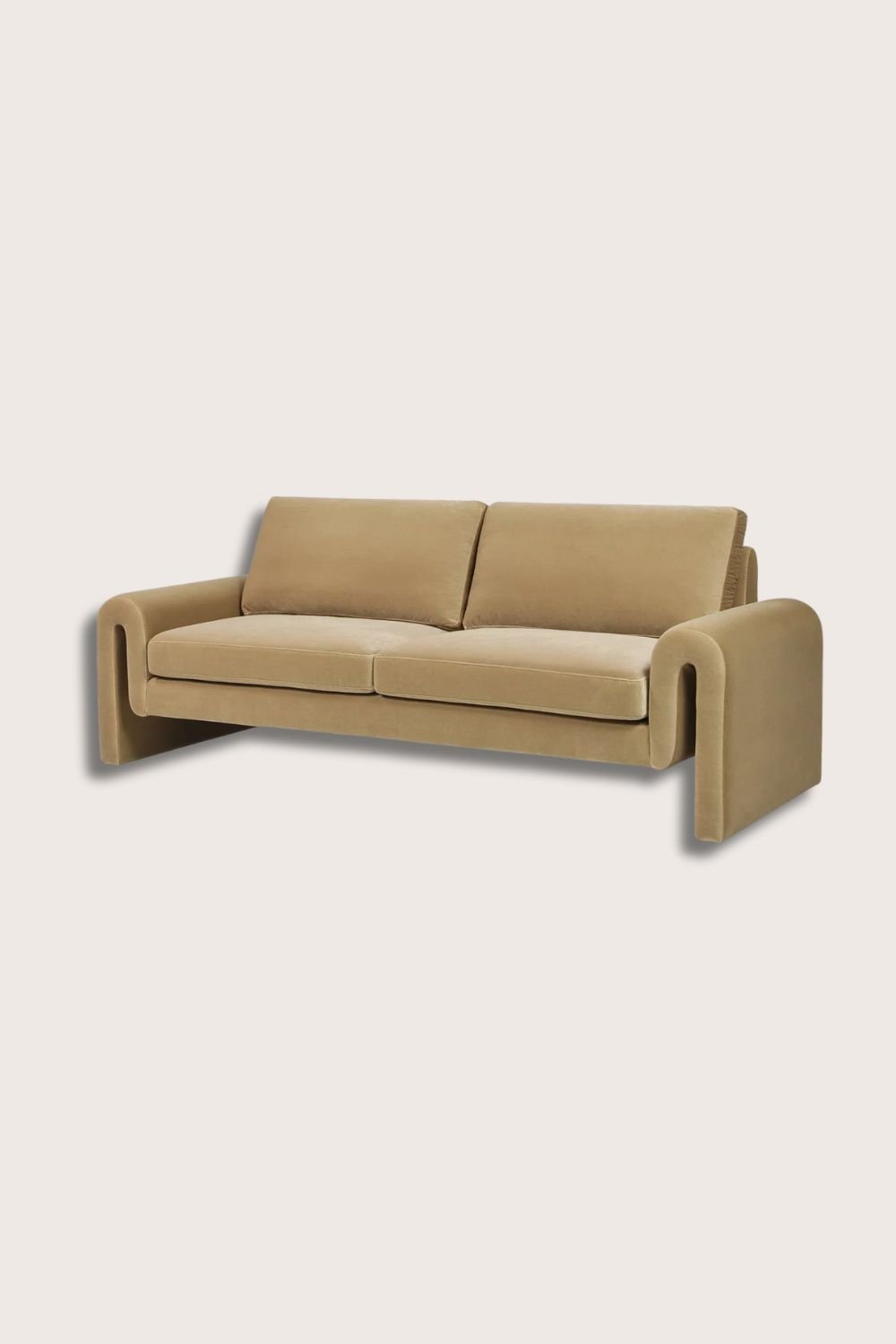Hana Getachew: Life on the Bolé Road
Photographs by Oliver Gordon. Originally published in AphroChic magazine Issue 9, Summer 2022.
For Hana Getachew, the Bolé Road is a lot of things. It’s the name of her celebrated textile line, a gorgeous collection of traditionally-inspired Ethiopian pillows and accessories, currently enjoying a collaboration with West Elm. It’s a popular thoroughfare in Addis Ababa, Ethiopia, where the designer was born. Most of all it’s a metaphor for all of the important journeys she’s been on in life, starting with the first one.
“I took two very important journeys on Bolé Road,” Hana reflects. “The first is where I first left Ethiopia as a child, because the road leads to Bolé International Airport. And then the second was when I returned for the first time, 18 years later.” Now she’s on the road again, taking a yearlong hiatus from home in her beloved Brooklyn to enjoy the sights, sounds and experiences of London.
Traveling with her husband, screenwriter Brian Tucker and their daughter, Gelila, Hana has stepped out of her comfort zone and into a whole new world - one she seems to like. “The second I arrived I was so enchanted with London,” she says. At the center of her enchantment is her family’s adopted home, a 3-bedroom, 2-story, Mews-style house in London’s fabled Chelsea neighborhood.
From the entryway, the home opens up into an intriguing living area made up of two separate rooms. Located directly across from each other, each has its own distinct design plan and color scheme. “One is warm and intense, and the other is all cool, muted tones,” Hana explains. “It was kind of a weird design challenge.” It was also indicative of how one of the home’s major selling points could also be one of its few drawbacks, especially for a designer.
“This place came fully furnished,” she shrugs, “which makes sense because who would want to furnish a home for just a year’s stay?” Still, living in a home built around someone else’s aesthetic took some getting used to. “I almost vetoed this apartment because of the oxblood sectional in the family room,” she laughs. “It's just not my vibe.”
The vibe that Hana left in Brooklyn is a highly curated mix of modern design, Ethiopian culture and family heirlooms. “Incorporating my culture and my heritage has always been a part of the spaces I've lived in.” Coming to London meant leaving some of her favorite things behind. “One of the most important pieces to me,” she lists, “is this kind of lopsided, off kilter, hide skin table from my parents home. I also have beautiful rugs that I found in Morocco. And I have a gallery wall of baskets. I incorporate a basket wall in every apartment that I live in.” Once Brian convinced her that a disagreeable sofa shouldn’t come between them and the perfect place, Hana got to work bringing in just enough design to make London feel like home.
Of course the sofa was her first target. She made the leather feel more cozy adding cushions from her own collection. The results were inspiring. “I was wondering if our pillows could even work in the space since there was already a lot going on color-wise, but it did! I even used our bed runner as a throw!” Following her success in the first living room, Hana took a more restrained approach to the second. “I kept the cool side of the living room more muted with some of our neutral pillows,” she remembers. After that, the rest was editing. “We rearranged the seating a bit so it flowed better, moving the armchairs in near the green settee which is actually a futon.” Hana’s effortlessly energetic aesthetic and facility with making the right moves in a space make it hard to believe that she didn’t always know that this was the field she was destined for.
“I'm not one of those people that knew what they wanted to be when they were young,” Hana admits. Then she reconsiders. “Actually, I did, I wanted to be an artist. I wanted to be a fine artist.” Following that path, she attended Cornell University as a fine arts major. Like any good student she had questions, and soon began to suspect that she wasn’t asking them in the right place. “I found that I really wasn't getting answers to the kinds of questions that I had.” So when a friend majoring in interior design invited Hana to take a class, it was an epiphany. “My mind was blown. They had classes like ‘Making a difference through design,’ all these things that I was interested in, and wanted to explore but wasn't quite getting in the fine arts program. So I made the transition and the rest is history.”
Making history meant first getting a job at an interior design firm before making the transition into textiles and a brand of her own. “As an interior designer, I love textiles and picking finishes and furniture,” Hana confesses. “So for me, developing a textile line felt like a natural transition.” The other major influence leading to the start of her line was Hana’s second big trip on the Bolé Road - her first trip back to Ethiopia. “That first trip back was really a pivotal moment in my life,” she reminisces. “Being immersed in my culture, and my country once again. I think that's when I first started thinking about wanting to be more involved.”
Down the stairs from the living rooms, another open space is home to the kitchen, dining room and an atrium leading to a beautiful outdoor seating area. Like the upstairs, Hana recognized a hot/cool dichotomy in the design plan, this time spread across the kitchen and dining room. “The kitchen’s cool cabinets, subtle blue tint and marble backsplash and shelf completely offsets the intense warmth of the dining area,” she says. Though in her heart it’s the bright colors of the dining room she really loves. “These amazing orange chairs just sing to me.” Together, the two spaces are the most popular part of the house, where the family spends most of its time. It’s proven to be ideal for spending time together. “Our New York home really made it easy to eat in front of the TV,” Hana says. “But here, with the living room upstairs, we just cook and eat, do work and homework downstairs. And there’s a playroom just down the hall.”
While the kitchen and dining room may see the most use, other rooms vie for position as Hana’s favorite. One of the front runners is her office. Originally designed as a nursery, complete with whimsical toucan-patterned wallpaper, it soon became an ideal space for Hana to take time to keep track of the many sides of her brand; sides which include collaborating with teams of weavers in Ethiopia who help to bring Hana’s products to life while giving her the opportunity to connect and give back. “A big part of why I started this company, is to not only be more connected to Ethiopia, but also to contribute in supporting the development of the economy,” she says. “The people of the South are really known for their weaving skills. They are the main contributors to weaving production in the country but each region has a very distinct aesthetic in their clothing and in their textiles. I love having the opportunity to share that.”
Hana’s textiles make another bold appearance in her London home in the cozy and chic outdoor space, accessible through her office. Just as in the rest of the home, pillows, throw blankets and even a rug add dimensions of color and culture to this intimate seating area, complementing the lush, green plants that hang from the walls. Embracing it as one of the areas where she could do the most design work, Hana played with furniture layouts as well as color palettes to create three separate seating areas. “It just makes it so cozy and inviting,” she smiles.
Even with all of its other amenities, Hana admits that it was the bedrooms this home had to offer that made it her choice - especially the one for her daughter, Gelila. The pretty, pink interior features several built-in sleeping spaces as well as a whimsical hanging light pendant and pompom-styled wall art. In her own bedroom, Hana’s textiles infuse similar pops of pink to energize the largely neutral color palette. There, the main attraction for Hana isn’t the room itself, but the room it’s attached to. “The master bath is one of my top three rooms here,” she grins. With an impressive list of features including a stand-alone tub, heated floors and towel rack and walnut cabinets along with a cool sounding name - “They call [master bathrooms] ‘ensuites’ here,” she informs - the bathroom is one of the things Hana says she’ll find hardest to leave behind when their time in London is through. “I don't know if I'll ever have any of these again,” she frets.
When she was three years old, the Bolé Road took Hana Getachew away from Ethiopia. Eighteen years later it took her back. Since then it’s taken her in and through all aspects of the interior design industry and into her own brand, to new ways of connecting with her heritage and sharing it with the world. Now, as her time in London draws to a close, Hana is ready to set out on the road again to see where it takes her next, knowing that wherever it leads, the road will always bring her home.
















